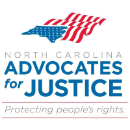Traumatic Brain Injury – The Frequent and Sometimes “Invisible Injury”
Traumatic Brain Injuries Are Costly
According to the Centers for Disease Control and Prevention (CDC), every year traumatic brain injuries (TBIs) are responsible for tens of thousands of deaths, hundreds of thousands of hospitalizations, and millions of emergency room visits. The CDC estimates that in the United States 1.7 million people sustain a TBI annually. Of those, 52,000 people die, 275,000 are hospitalized and nearly 1.5 million are treated in emergency rooms. About 75 percent of TBIs are considered “mild” brain injuries, but even mild brain injuries can lead to dysfunction and disability. Direct and indirect medical costs of TBIs total 60 billion dollars annually.
Legal Claims for Traumatic Brain Injury
Traumatic brain injury legal claims are challenging and complicated. The injuries may not only be difficult for the injured person to notice, but also difficult for healthcare professionals to diagnose, and difficult to prove in court because the symptoms can be subtle and subjective. TBIs, however mild, can have a major adverse impact on a person’s daily life. Our attorneys have helped clients who have suffered permanent and life-changing brain injuries resulting from medical mistakes, motor vehicle and tractor trailer collisions, falls and explosions at construction work sites, and other traumas.
Symptoms of TBI
Symptoms of TBI are similar to those from a concussion; however, a TBI is a more severe brain insult and the adverse effects are longer lasting. TBIs can range from the most severe such as those causing death, coma, paralysis, or seizures, to moderate or mild that cause more subtle effects, but no less life-changing, including cognitive changes, short-term memory loss, inability to concentrate or focus, headaches, difficulty reading, mood swings, dizziness, hypersensitivity to sound, sleep disturbances, and emotional and behavioral changes. While the most severe TBIs are obvious because of visible injuries to the head and neck, it is the mild brain injury that is often overlooked by healthcare providers and legal professionals. It takes time to diagnose, treat and recover from these conditions.
Any trauma to the scalp, skull or brain is considered a head injury and can range from a bump on the head to a penetrating type brain injury. A closed head injury occurs from a blow to the head that does not break or fracture the skull. Any head injury can cause a traumatic brain injury which would be classified as mild, moderate or severe. Most brain injuries are mild, but that does not mean they are not serious.
When most of us think of head injuries, we imagine fractured skulls and open head wounds. This is why mild brain injuries can be missed. Even if there is no visible trauma to the head, like a cut or bruise, the brain can be damaged in what are called “closed head injuries.” A closed head injury occurs when something strikes the head or jostles the brain but does not cause an open wound, or when a strong force – like a car accident – causes the head to jerk violently without hitting anything.
Although the skull protects the brain from most external forces, our soft brains have little protection against many types of violent forces and can suffer injury in a variety of ways. When the head is in motion and suddenly stops or is violently jerked in one or more directions, the brain can momentarily be compressed toward one side of the skull. You can literally “sprain” your brain. The shock these forces generate can cause bleeding of the brain, interrupt blood flow in the brain, damage connections between brain tissue and cause other types of brain trauma. Damaged brain cells can result in the formation of scar tissue that can impede the functioning of healthy brain tissue, and cause cognitive and functional disabilities.
The symptoms of a TBI usually depend on what part of the brain is injured and the degree of severity. A TBI can take weeks, months or years to heal, but can also be permanent. Most recovery from a severe head injury takes place within the first six months, and while improvement may continue for two years, there can be permanent impairments. Seizure disorders may develop as long as four years after a severe head injury.
Pursuing a Legal Claim
It is important for those who have suffered a brain injury due to the negligence of another person to receive compensation for their brain injuries. Compensation ensures that an injured person is in the best position to obtain treatment of a brain injury and achieve the best recovery possible.
Here are some important considerations and steps to keep in mind if you are faced with a TBI:
- Pursuing a legal claim for negligent brain injury involves a thorough review and understanding of how the injury occurred.
- Seek prompt medical help from healthcare providers who are trained to diagnose and treat brain trauma.
- Obtaining a clear picture of who the injured person was before the accident and how he or she lived, worked, and behaved is needed in order to provide a clear idea of how that person and his or her life has changed as a result of the injury.
- What is more, the brain injured person may not even know it. That is why it is important to use family and close friends as historians to give “before” and “after” descriptions of the injured person.
- Vocational evaluation and neurocognitive testing may be required, as well as assistance from professionals such as a neuropsychologist, a life care planner and an economist. A biomechanical engineer may even be needed to explain how the brain injury occurred.
This article was written by attorney Forest Horne and originally appeared in the Brain Injury Association of North Carolina’s newsletter Strategies. Martin & Jones is a proud sponsor of BIANC and its mission.
“The BIANC is a 501(c)(3) non-profit organization and an affiliate of the Brain Injury Association of America. Founded in 1982 by families and concerned professionals, BIANC has a mission of offering help, hope, and a voice for people with brain injury and their families.
BIANC strives to create a better future for the approximately 200,000 North Carolinians living with brain injury through prevention, support, education, and advocacy programs.”
Share This





Contact Our North Carolina Personal Injury Law Firm
for a Consultation for Your Accident or Medical Malpractice Claim
FOR FREE No Win, No Fee
The law firm you choose makes a difference. If you are the victim of an accident or an illness that someone else caused, the North Carolina personal injury law firm of Martin & Jones has the depth of experience, skills and sensitivity to make your road to recovery as smooth as possible. Whether you have experience with the legal system or have never hired a medical malpractice or personal injury lawyer before, our attorneys and staff will do our best to answer your questions, provide clear advice and prepare you and your family for what to expect. If you would like more information or to meet with one of our attorneys, please fill out the form below or call us at 800.662.1234.

